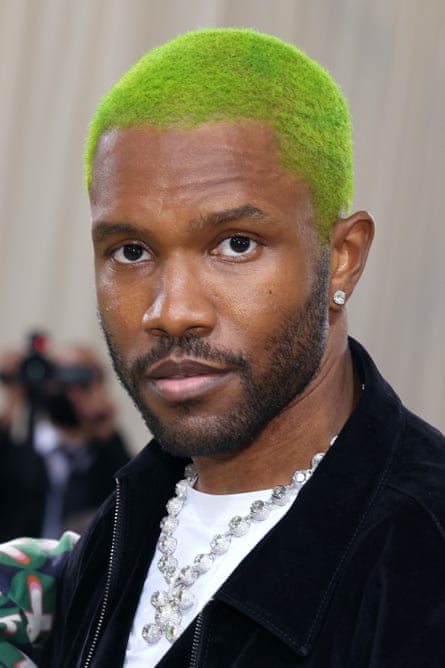Elizabeth Taylor wore a 68-carat version, Audrey Hepburn and Beyoncé sported the same yellow one and Shirley Bassey made a large slice of her fortune singing about them. Diamonds have long been the most coveted gem for anyone with enough money or status, but the growing popularity of a lab-grown version of these stones is now causing schisms in the jewellery world.
Lab-grown diamonds are created in weeks in plasma reactors and have only been recognised as diamonds by the US’s Federal Trade Commission since 2018, but they have already spawned a $6bn industry, a figure that is expected to double by 2025.
In the last year, luxury brands’ attitudes towards lab-grown diamonds (LGD) have shifted too. There has been significant investment in the stones. Jeweller Pandora launched its Brilliance collection featuring lab-created diamonds made with 100% renewable energy in the US this summer.
“North America is the biggest market for diamonds globally,” says Rasmus Brix, UK&Ireland managing director at Pandora, “so it was a big moment for us. And, as Pandora is the world’s largest jewellery brand, it was a big moment for the LGD market too.”
At the high end, luxury conglomerate LVMH, which includes brands such as Louis Vuitton and Tiffany, invested in an Israeli lab-grown producer this year. Tag Heuer, another LVMH brand, introduced the Carrera Plasma in March. It’s the watch company’s first timepiece adorned with lab-grown diamonds.
Celebrities are also endorsing the LGD trend. Rapper Drake liked the one-off necklace that musician Frank Ocean’s lab-jewellery brand Homer made for the 2021 Met Ball so much he bought it for $1.9m (£1.7m) this year. Actress Zoe Kravitz has also worn lab grown gems to the Met Ball. Lady Gaga, Billy Porter and Penelope Cruz are just some of the names who have worn the stones to walk the red carpet.
 View image in fullscreenFrank Ocean attends the 2021 Met Gala benefit “In America: A Lexicon of Fashion” at Metropolitan Museum of Art wearing his one-off necklace designed by Homer. (Photo by Taylor Hill/WireImage) Photograph: Taylor Hill/WireImage
View image in fullscreenFrank Ocean attends the 2021 Met Gala benefit “In America: A Lexicon of Fashion” at Metropolitan Museum of Art wearing his one-off necklace designed by Homer. (Photo by Taylor Hill/WireImage) Photograph: Taylor Hill/WireImage
Though lab-grown stones were first created in 1954, recent technological advances in manufacturing mean that they now match “the four Cs” of natural diamonds – cut, clarity, colour and carat. They are made using carbon-rich gases at low pressure and high temperature. Jewellers cannot tell natural from lab without specialist equipment. “When lab-grown arrived, they were seen as a threat by the diamond industry,” says Jessica Warch, co-founder of LGD firm Kimaï.
“It’s also a very small industry, everyone knows each other, and when we first started they wondered why we were getting involved with these ‘fake’ diamonds. But they see demand changing and now some of them deal lab-grown.”
British-Israeli jewellery designer Talya Paskin has also encountered strong opinions on the new stones. Her brand Aurum + Grey is a favourite with celebrities such as the Duchess of Sussex, and Kylie Jenner. She uses recycled metal and stones where possible but also includes lab-grown in her collection. “There are two very clear camps within the industry with very strong opinions,” she says. “An American trade forum I’m a member of has actually banned any posts about lab-grown diamonds; the opinions are black and white.”
There is an assumption that lab-grown are fundamentally more ethical than mined diamonds as it is easier to trace their provenance. Like many centuries’ old industries, the history of diamond mining is steeped in colonialism and abuse of human rights and the environment. But 56% of lab-grown diamonds come from China, a country that does not have a reputation as a bastion of good working conditions.
The UK’s Responsible Jewellery Council is in the process of developing a set of standards to make sure they are subjected to the same rigorous standards as natural diamonds.
“The traditional diamond camp argue that there is limited transparency over the eco credentials of factories. The lab-grown camp argue that extensive mining has a severe environmental impact,” says Paskin. “The traditional camp is protecting an industry that employs a vast number of people in developing economies. If I could wave a magic wand, the traditional diamond workers would all switch over to monitored lab work with less environmental impact. There are said to be 10 million people working in the diamond industry from mining through to sales, contributing to 45 million family members, so the humanitarian responsibility here is very real.”
While the disagreement about lab-grown is in part a pragmatic debate about sustainability this is also a generational shift in the definition of luxury. The idea of what a diamond should be and where its value lies is changing or splitting.
“We grew up around fine jewellery, but we feel disconnected from the traditional market,” says Warch. “In terms of marketing, it all still seems aimed at our grandparents – something for men to buy for women. It’s so outdated. With Kimaï we wanted to create jewellery we would buy for ourselves. Lab-grown are also cheaper to make for the planet and cheaper for people’s wallets.”
The democratisation of diamonds is something that Brix mentions too. “Our objective has always been to create jewellery that’s accessible for everyone. Our Brilliance range is at a lower price than mined diamonds.”
David Kellie, CEO of the Natural Diamond Council, believes that the difference in price has long-lasting consequences for consumers. “A lab-grown will give you the pleasure of a nice diamond but it won’t be worth as much over time,” he says. “We talk about the endorphin rush that a diamond gives you. For most people, a diamond is something that you wear every day and then pass on to your children. I think a natural diamond gives you a bigger long-term endorphin rush.”
Puskin points out that the majority of fine jewellery loses value on resale as customers pay a premium for brand name jewellery, but acknowledges that there’ll always be purists when it comes to diamonds. “The majesty of purchasing a stone that has been growing for millions of years and plucked out of the ground is so special – but we are facing environmental catastrophe if we don’t actively become more conscious.”
Warch feels less romantic about the wonder of a natural phenomenon. “With these diamonds, the difference is like that between ice from a freezer and ice from an iceberg. It’s still ice. But lab production can bring change to an industry that has never seen changes. Now we’re bringing it.”
Perhaps Brix has the best advice of all. “We would encourage people to go, touch, try on and see lab-created jewellery for themselves.”
In the debate of the diamonds, it is the consumer who’s going to decide.






Leave a Reply
You must be logged in to post a comment.